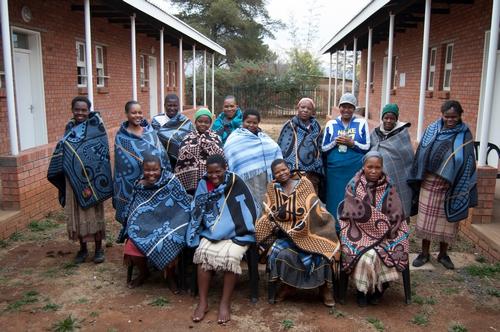São Tomé and Príncipe wants to become the “Dubai of Africa” with a port built by China
NOVEMBER 3RD, 2015
 FEATURES
FEATURES

After 2014 was marked by an unprecedented visit to China by a president of São Tomé and Príncipe, the archipelago will now receive a huge Chinese investment in order to become the “Dubai of Africa.”
The deep-water port costing an estimated US$800 million and whose construction was awarded to a Chinese group was presented in October by the government of São Tomé and Príncipe to investors in London, where the Prime Minister Trovoada in an interview with the Independent on Sunday, defended the archipelago’s “business plan”.
“What China is offering in a deal like this is a loan, not a donation. What we have is a technically capable Chinese company that has engaged. It’s a business arrangement, not a political one,” said the head of the government of São Tomé.
The China Harbour Engineering Company (CHEC) will co-finance the construction of the port, with at least US$120 million. The government describes the new port as a “world-class infrastructure to serve the logistics needs of the Gulf of Guinea.”
The first deep-water port on the archipelago will be built in the Fernão Dias area, Lobata district, 12 kilometres from the capital, and should become operational in 2019.
The Prime Minister of São Tomé told the Independent on Sunday that São Tomé had the goal of being the “Dubai of Africa,” a “services platform” that takes advantage of its geographical proximity to some of the largest economies in the continent.
Last year, the relationship between China and São Tomé and Príncipe became less distant with the visit of Manuel Pinto da Costa, the first by a President of São Tomé to China in almost twenty years, despite being in a private capacity.
Also last year, Chinese company Guangxi Hydroelectric Construction Bureau started construction of a housing development on the island of São Tomé, a self-funded scheme worth an expected US$300 million.
To be built between the capital of São Tomé and Príncipe and the Lobata district in an area of 214 hectares, the new development will have just over 100 houses as well as supermarkets, schools, kindergartens and a hospital.
Part of the “Expu Conga” project designed by the Ministry of Public Works of Sao Tome and Principe, the new development will also have buildings for the diplomatic corps accredited in the archipelago as well as various facilities with a maximum of seven floors for public administration services, including tourist, shopping, culture, sports and leisure areas.
In addition to building the new development from scratch, the contract also includes upgrading of the present city of São Tomé, built in the 1950s by the then Portuguese colonial administration. (macauhub/CN/ST)
São Tomé and Príncipe wants to become the “Dubai of Africa” with a port built by China | Macauhub English
NOVEMBER 3RD, 2015

After 2014 was marked by an unprecedented visit to China by a president of São Tomé and Príncipe, the archipelago will now receive a huge Chinese investment in order to become the “Dubai of Africa.”
The deep-water port costing an estimated US$800 million and whose construction was awarded to a Chinese group was presented in October by the government of São Tomé and Príncipe to investors in London, where the Prime Minister Trovoada in an interview with the Independent on Sunday, defended the archipelago’s “business plan”.
“What China is offering in a deal like this is a loan, not a donation. What we have is a technically capable Chinese company that has engaged. It’s a business arrangement, not a political one,” said the head of the government of São Tomé.
The China Harbour Engineering Company (CHEC) will co-finance the construction of the port, with at least US$120 million. The government describes the new port as a “world-class infrastructure to serve the logistics needs of the Gulf of Guinea.”
The first deep-water port on the archipelago will be built in the Fernão Dias area, Lobata district, 12 kilometres from the capital, and should become operational in 2019.
The Prime Minister of São Tomé told the Independent on Sunday that São Tomé had the goal of being the “Dubai of Africa,” a “services platform” that takes advantage of its geographical proximity to some of the largest economies in the continent.
Last year, the relationship between China and São Tomé and Príncipe became less distant with the visit of Manuel Pinto da Costa, the first by a President of São Tomé to China in almost twenty years, despite being in a private capacity.
Also last year, Chinese company Guangxi Hydroelectric Construction Bureau started construction of a housing development on the island of São Tomé, a self-funded scheme worth an expected US$300 million.
To be built between the capital of São Tomé and Príncipe and the Lobata district in an area of 214 hectares, the new development will have just over 100 houses as well as supermarkets, schools, kindergartens and a hospital.
Part of the “Expu Conga” project designed by the Ministry of Public Works of Sao Tome and Principe, the new development will also have buildings for the diplomatic corps accredited in the archipelago as well as various facilities with a maximum of seven floors for public administration services, including tourist, shopping, culture, sports and leisure areas.
In addition to building the new development from scratch, the contract also includes upgrading of the present city of São Tomé, built in the 1950s by the then Portuguese colonial administration. (macauhub/CN/ST)
São Tomé and Príncipe wants to become the “Dubai of Africa” with a port built by China | Macauhub English







 spitting
spitting
